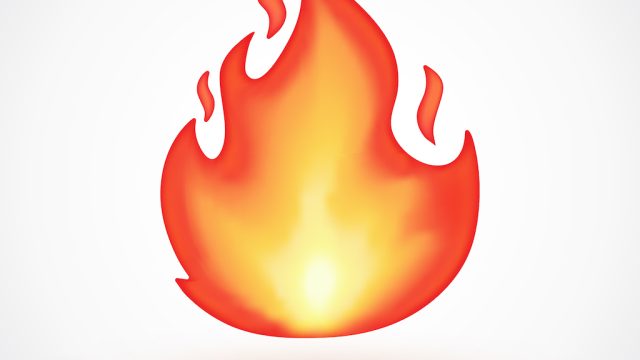How Our Rampant Emoji Use Is Making Court Cases Way More Confusing

If you text anyone under the age of 40 on a regular basis, chances are you communicate in emoji. And while these little symbols and graphics may be a fun way of expressing emotion, the downsides are that many emoji have a double meaning that not everyone understands, and some are just downright inexplicable.
This has become an increasing issue in the legal system. According to Santa Clara University law professor Eric Goldman, emoji references in court cases have skyrocketed in recent years. This makes things a bit complicated, given that the coded symbols—by their very nature—are open to interpretation.
In 2017, an Israeli couple were told to pay $2,200 in fees over a text that they sent to a landlord who had posted a classified ad for an apartment. The text (which was originally in Hebrew) read, “Good morning… we want the house….just need to go over the details… When suits you?” Seems logical enough. But here’s where the communication gets complicated: It also included a smiley face, a peace sign, women with bunny ears, a flamenco dancer, a bottle of champagne, a comet, and… a squirrel. When the would-be tenants ended up ghosting him, the landlord took them to court and made the argument that the emoji conveyed a lot of enthusiasm for renting the apartment, and that he had lost business by keeping it off the market for them. And he won.
Here’s the statement from the judge who ruled in his favor:
“The…text message sent by Defendant…included a smiley, a bottle of champagne, dancing figures and more. These icons convey great optimism. Although this message did not constitute a binding contract between the parties, [it] naturally led to the Plaintiff’s great reliance on the Defendants’ desire to rent his apartment…These symbols, which convey to the other side that everything is in order, were misleading.”
There are other cases in which the use of emoji is even more sinister, and where the intent is even more difficult to prove. According to the tech site the Verge, there was a case in which Bay Area prosecutors tried to charge a man who had been arrested in a prostitution sting, citing an Instagram direct message he had sent to a woman that said, “Teamwork make the dream work,” followed a high heels emoji and bag of money emoji placed at the end.
According to Goldman’s records, the use of emoji in court cases has not only increased but also diversified. Back in 2004, the only emoji that came up in lawsuits was the smiley face. In 2018, they saw the use of cowboy, winky face, angel face, cat laughing while crying, surgical mask face, the middle finger, lips, broken heart, fire arm, and more.
Given that they are open to interpretation, Goldman said that many judges currently refuse to admit them as substantial evidence, and that “many judges decide to say ‘emoji omitted’ because they don’t think it’s relevant to the case at all.”
But that could all change soon.
“We’re going to see emojis show up more frequently when the case involves people talking to each other,” Goldman said. “That can happen in criminal law, but it can happen in contract law as well. There’s a bunch of chatter that takes place before a contract is actually formed.”
And to make sure you’re up to date on these popular little symbols, check out the 25 Secret Second Meanings of These Popular Emoji.
To discover more amazing secrets about living your best life, click here to follow us on Instagram!